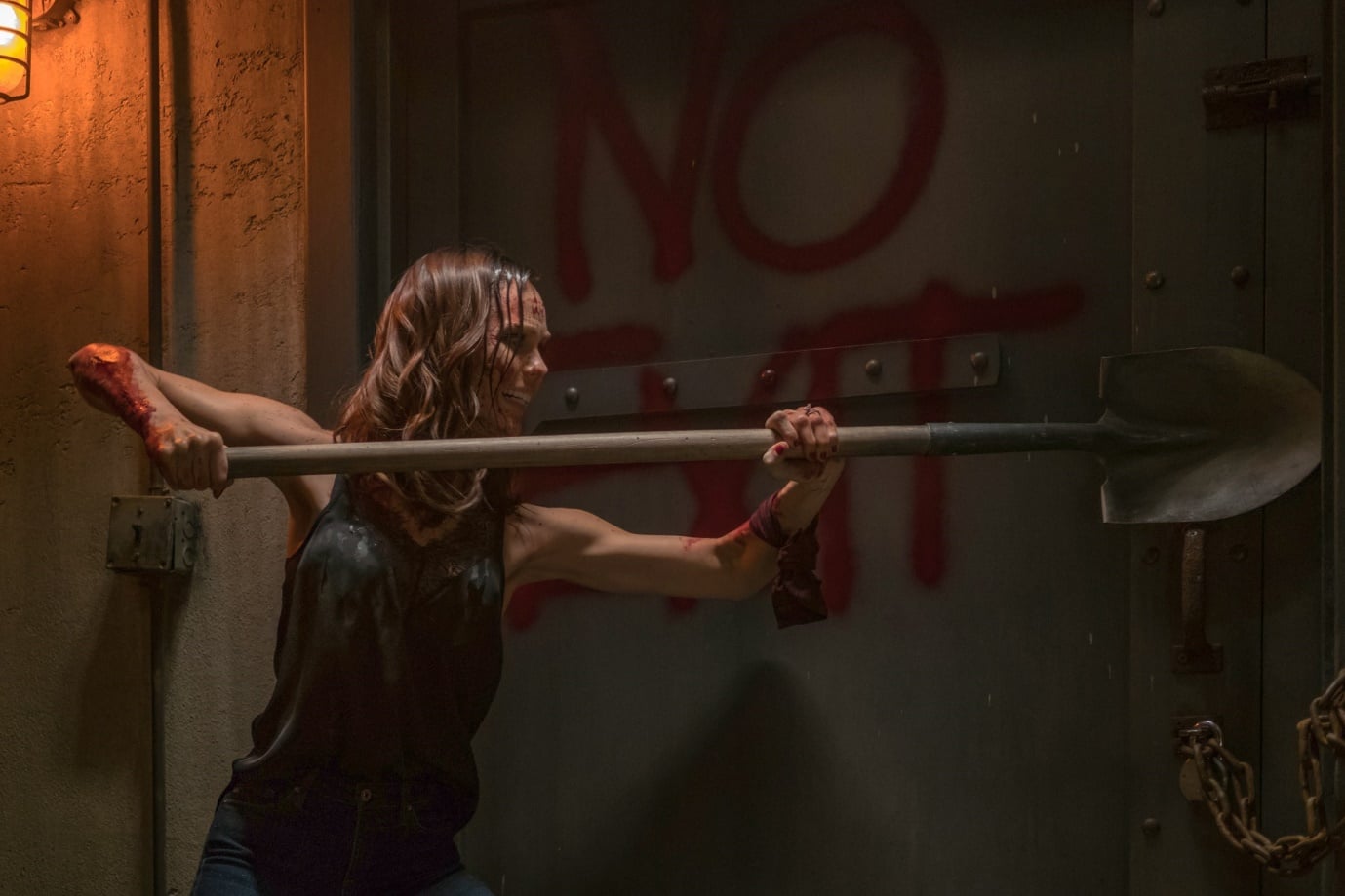Putting together the pieces of a broken franchise, only to find you’ve lost the last piece under the sofa.
I love horror. It has always had a special place in my heart, and more specifically the ‘Saw’ movies have their own dark little corner reserved for their brand on torture-flicks. As their annual TV ads used to inform us, via that oh-so-edgy voice “If it’s Halloween, it must be Saw!”. But then, in 2010 the series ended in the aptly named ‘Saw 3D: The Last Chapter’. That was until Halloween 2017 when the series came back from its gory grave to remind us that just when we thought it was over, there was another game to be played…
‘Jigsaw’, the 8th instalment of the ‘Saw’ franchise, was one of my most anticipated films of this year. Having been too young to see any of the previous gore-fests in the cinema, the hype train was running full steam ahead once this sequel was announced. I boarded, grabbed my ticket, and went to get in line. But there was no line. In fact, the giant cinema I went to see ‘Jigsaw’ in was completely empty, aside from me and the other sadists who came along with me. So, why didn’t anyone show up for the revamping of some classic horror royalty?
Well, firstly a big issue is the plot. ‘Jigsaw’ jumps back into the world of ‘Saw’ around ten years after the death of John Kramer, the ‘Jigsaw Killer’, and our story kicks off with a string of bodies being found around the city, imitating the work of the late psychopath. All evidence points to Kramer, but being dead for ten years gives you a pretty solid alibi. This seems a pretty intriguing scenario, but when you break down this potentially fascinating plot, you can see that every one of the six ‘Saw’ sequels contains this very plot device. So, maybe audiences are sick of seeing this same story over and over, but like the ‘Pirates of the Caribbean’ movies; they just refuse to break the narrative mould that granted them their initial acclaim.
Another key issue lies in the film’s ideology. The main thematic foundation, on which ‘Saw’s house of horror sits, is morality; specifically, the morality of Jigsaw’s games. The very idea of each victim is guilty of a certain crime or injustice and being able to win these sadistic games through confession and acceptance is how Jigsaw became the enigmatic murder messiah of cult horror, that he is today. Unfortunately, mid-way through the series, Jigsaw’s maniacal mantle is passed onto his apprentice Amanda, who changes the traps completely; making them inescapable, and unfair. On one hand, this strips the film of its complex ideological debate, yet on the other hand, it led to some of the most enjoyable films of the series through its new focus on shock value via gruelling gore.
Both the sixth and seventh films are purely popcorn flicks, trying to gain an “eww” and “err” from audiences during each and every scene. In these films, when ‘Saw’ released its need to be prophetic and slightly pretentious and stopped taking itself so seriously, we are given a meaty cinematic chunk of gore, gasps and surprisingly grins, from the films more humorous tone. Sadly, we see this entertainingly free feel to the film’s end in ‘Jigsaw’, as they try to reset their approach and go back to moody morals of the mid-franchise movies. This only ends up with the movie having a jaded and overly convoluted voice, accompanying a redundantly serious style.
‘Jigsaw’ himself is embodied by veteran horror actor, Tobin Bell. The line between himself and the character is so thin, that it’s rather unnerving. Apparently, Bell writes most of Jigsaw’s dialogue from scratch whilst on set. As a result, he manages to pull off a very deep and believable performance, which horror fans have grown fond of after thirteen years. Aside from the big man, there are the victims he preys upon within his new set of games. Although the actors are much better than that of ‘Saw 3D’, they lack any charisma, intrigue or dynamism, which in total makes them just barely watchable. However, at no point do we root for them or in fact any of the other bland characters in this twisted little film.
Easily the biggest draw of the series is the traps. Those carefully crafted and bloodily brilliant contraptions which provide our victims with a literal choice between life and death. Whether it is the ‘Reverse Bear Trap’ or the ‘The Razor Box’, these traps helped shape the series and give the films their iconic trope. They started off as simple and sufficiently sick, and then as the series progressed they ended up as insanely wicked set pieces of horror art. Unfortunately, the traps in this film are dull. Clearly, the killer must not have been as bright as the original Jigsaw; to the extent of one of their traps consisting of just dropping sharp objects on the victims. Although these traps still produce that reliable reel of gore, they are so much less enjoyable when there is clearly no skill or thought in their construction.
On the brighter side, at times the film is relatively well shot. Cinematographer Ben Nott nicely frames the victims in a claustrophobic fashion, which makes the viewers themselves feel trapped. A memorable shot near the end of the film sees one of the final victims out of focus, behind the trap, as they are framed by it; holding them captive before the game has even begun. But, literally every nice shot from the film is in the trailer and as a result leaves nothing but generically gloomy shots of the victims moping about their respective rooms, for us to see in the cinema. I bet you can hardly wait.
The ending of this movie, which undoubtedly won’t be the last we see of the series, is definitely one which will have non-horror-junkies fishing through the internet for one of those ‘Ending Explained’ YouTube videos, as soon as the film finishes. An incredibly predictable plot twist is the bloodstained cherry on top of this slasher sundae and only further confuses new viewers, as the film complicates the already impossible to follow narrative that snakes throughout the franchise, by jumping back and forth between timelines and perspectives. In the end, this leads to even the most avid ‘Saw’ aficionado struggling to keep up.
As a whole, I expected a lot more from Directors Michael and Peter Spierig, who are renowned for their work on deeply plotted Sci-Fi ‘Predestination’. To go from creating a film which could rival ‘Inception’ in its conceptual complexity, to one which repeats the past narrative mistakes of its prequels to a T. Also, near the end of the film a Soderbergh-esque montage, which explains the twist in vague details appears, and instead of a homage this feels much more like a plain rip off; further lacing the movie with a thicker layer of unoriginality.
I would say that ‘Jigsaw’ is an unfortunate end to a great franchise, which was once King of the kill. But, I’m 99.9% sure that this is not the last time we’ll see Kramer and his evil interns chaining random people to radiators because they don’t appreciate life enough. They tried for a fresh start, by distancing themselves from their numbered predecessors, yet managed to repeat their sins and focus on the parts that made the other ‘Saw’ films weak. If you’re looking to watch this film as a sufficient send-off for this horror legend, then think again, as ‘Jigsaw’ is not a puzzle you want to complete.
6/10




